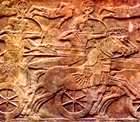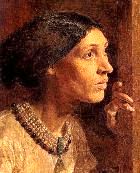Deborah’s turbulent world – Canaan
How do we know about Deborah’s world?
The story of Deborah and Jael is described in the Book of Judges – which is a violent book. It describes the terrifying time the Hebrew tribes had as they tried to gain a foothold in the land of the Canaanites.
There was no law and order as we know it. It was every man – or tribe – for himself.
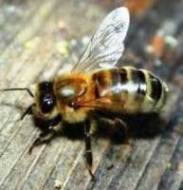
‘Deborah’ means ‘bee’ – ‘float like a butterfly, sting like a bee’, as Muhammad Ali said.
This wasn’t just happening in Canaan. All over the Mediterranean and the Middle East, people and nations were on the move and the Hebrew tribes, coming up from Egypt with Moses, were among these migratory groups.
But the land they entered was already occupied by Canaanites, who held the area now covered by Israel and Lebanon, and were not about to give it up.
Who were the Canaanites?
The Canaanites were a well-organized group. They built city-states all over Canaan. They governed the land, particularly the fertile plains, with a sophisticated king-vassal system.
The Israelite tribes were no match for them. So instead of trying to conquer the Canaanites outright, the Hebrew tribes sensibly opted instead for the sparsely populated, less fertile hill territories of Canaan.
The Canaanites naturally resisted this intrusion, as the stories of Deborah and Jael show only too well. They were more technologically advanced than the Israelites – they could smelt metal for a start, which meant they had superior weapons and ploughs.
Advantages of the Canaanites’ technology
At this time (the beginning of the Early Iron Age), the following advances in technology were made:
- iron was introduced for household and farm tools, which was a major technological breakthrough; iron was harder, less likely to break than bronze, and blades would keep sharp for a longer time
- stone-lined tanks or cisterns were built to conserve water during dry periods; this made agriculture and life in general more predictable
- terracing made it possible to farm hillsides that had previously been unsuitable for farming; it also solved problems of land erosion and soil loss.
As they put down roots, the Israelites gave up their nomadic life. Instead of being wanderers, they became farmers and herders of animals. They wanted access to the same technology the Canaanites had.
Hebrew tribes v. Canaanites
The Canaanites guarded their technology jealously, refusing (sensibly) to share it with the invading Hebrews.

Canaanite daggers. Bronze weapons were being superseded by iron, not available to the Hebrews because the Philistines very sensibly forbad Hebrews the use of iron foundries. Israel’s main weakness was the disunity of the tribes and the lack of weapons.
This meant the Hebrew tribes, among them Deborah’s group, had inferior weapons, no match for the iron swords and chariots of Sisera’s forces. When they fought they were lightly armed with slings, bows and swords – see the story of young David, and Slings in War.
In some cases, as the story of Deborah shows, this could be a distinct advantage. The Israelite guerilla fighters was able to slaughter their enemy and win the day.
Chariots in Canaan
At the time of Deborah, only the armies of the great powers were able to maintain chariot squadrons. The Israelites could not. There is no mention in Deborah’s story of chariots being used by the Israelites. Their tribal territory at this point was mostly hill country, too steep for chariots.
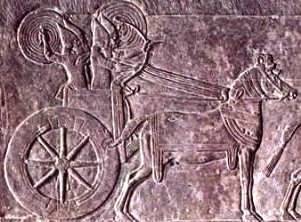
Large-wheeled chariot, Assyrian, with armed warriors
This put the Israelites at a terrible disadvantage, but it was not all bad. The much-feared chariots of the Canaanites looked impressive on wall reliefs (see opposite) but they were heavy and their traction system was primitive. If they turned quickly at speed they rolled over. They were designed to charge and terrify the enemy, then engage him with javelins and spears.
Battle!
When it came to the crunch, the chariots were worse than useless.
In the great battle between Deborah and Barak, and the Canaanite general Sisera, the 900 iron-wheeled chariots of the enemy were hopelessly bogged in the quagmire at the bottom of Mount Tabor, after what seemed like a miraculous downpour.
Women and war
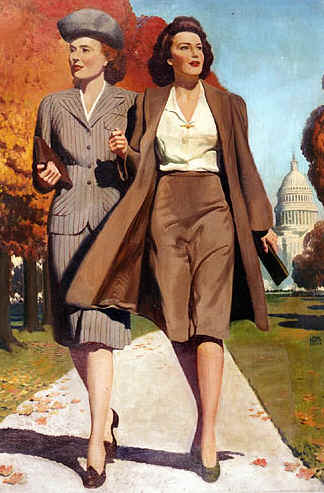
War poster from the 1940’s,when women were urged to join the Army
Stories about ancient wars hardly mention women – the Deborah saga is an exception. But then, as now, women were involved when their country/tribe was at war.
As far as we know, women did not take an active part in fighting, except in the desperate hand-to-hand fighting that happened in the last stages of defeat, when enemy soldiers entered and sacked a city.
However, they fulfilled other vital roles:
Rahab acted as a spy, a messenger and a decoy
- Deborah was responsible for the strategy and victory of the Hebrew armies
- Jezebel seems to have governed her husband’s kingdom when Ahab was at war
- Judith went into the enemy camp and singlehandedly slaughtered the brutal Holofernes
- Delilah subverted and eventually destroyed Samson for the Philistines
Women not only kept the home fires burning, but tilled the fields, looked after farms and livestock, wove cloth, fed their families and educated the young.
A formidable contribution indeed.
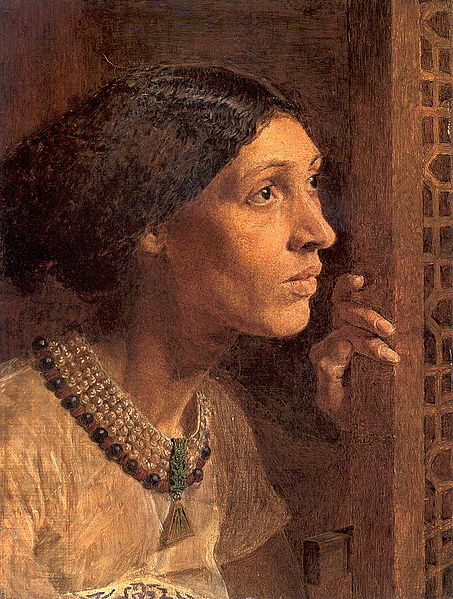
The Mother of Sisera looking out a window, Albert Joseph Moore
Search Box
![]()
Deborah, Jael links




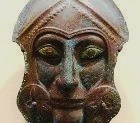
Movies

Modern films often tell a story like Deborah’s. The character Sarah Connor in the movie ‘Terminator’ defends her people by becoming a leader/savior when no-one else will.
Bible Study Activities
has a list of films with similar themes.
Guided reflection

What lessons can we learn from Deborah? Try Hope in God

The Canaanite chariots hurtling across the plain on their iron wheels were stopped dead in their tracks by a sudden downpour. Bogged in the mud, sinking under their own weight, they were easy prey.
Chariots in Battle
This was not the last time that battle plans were ruined by mud. Bible Top Ten Warriors has heart-rending images of war in later centuries.
© Copyright 2006
Elizabeth Fletcher


